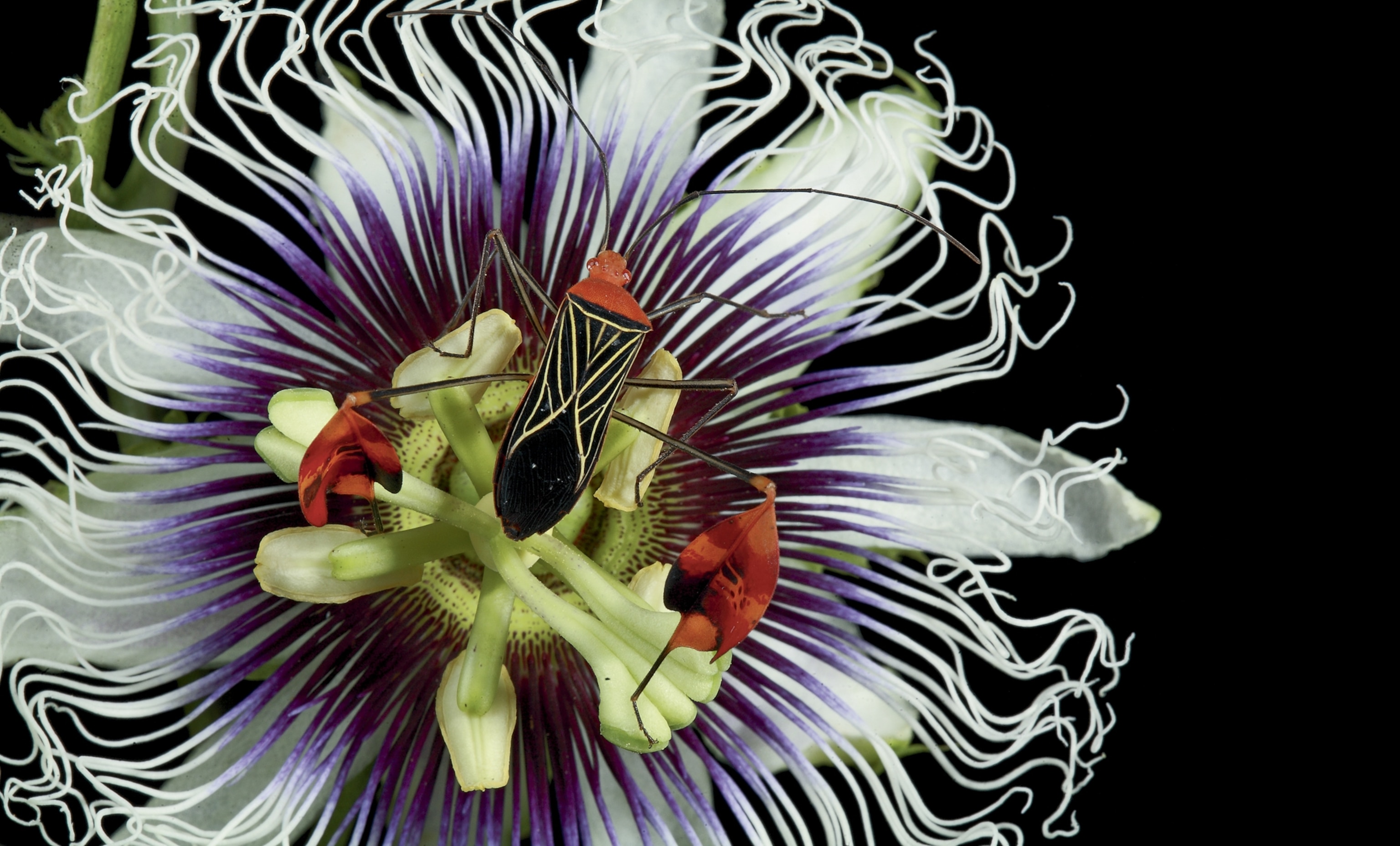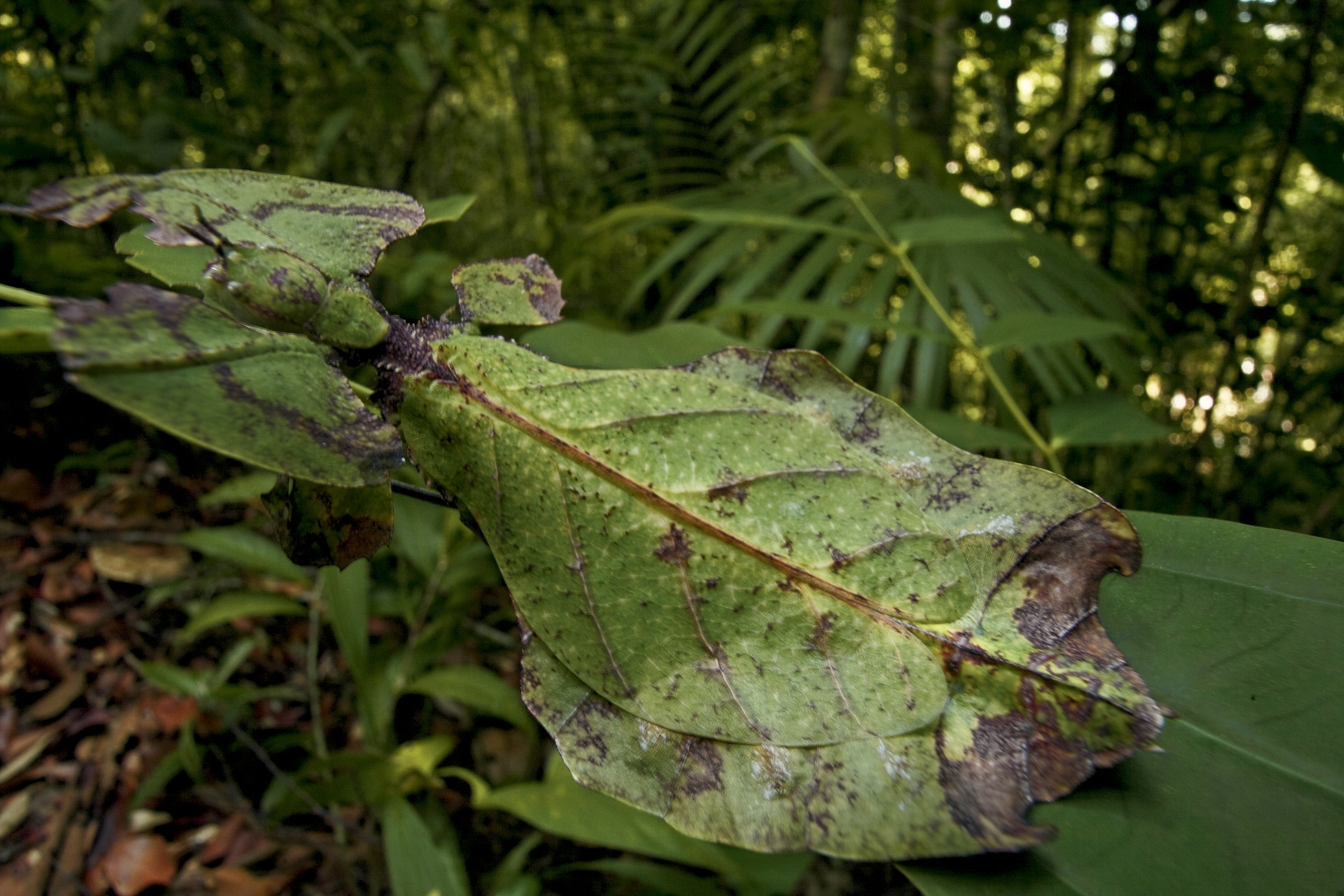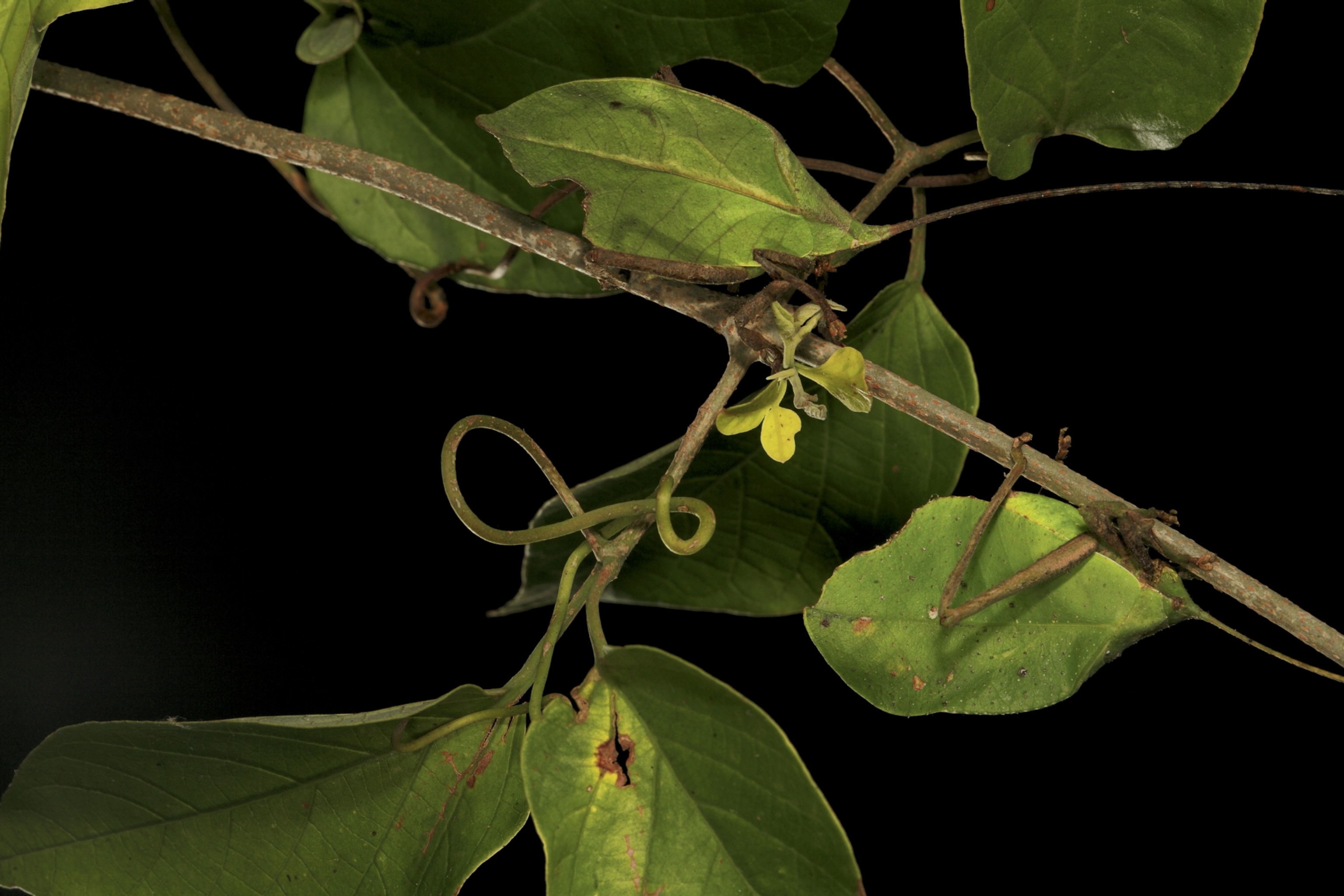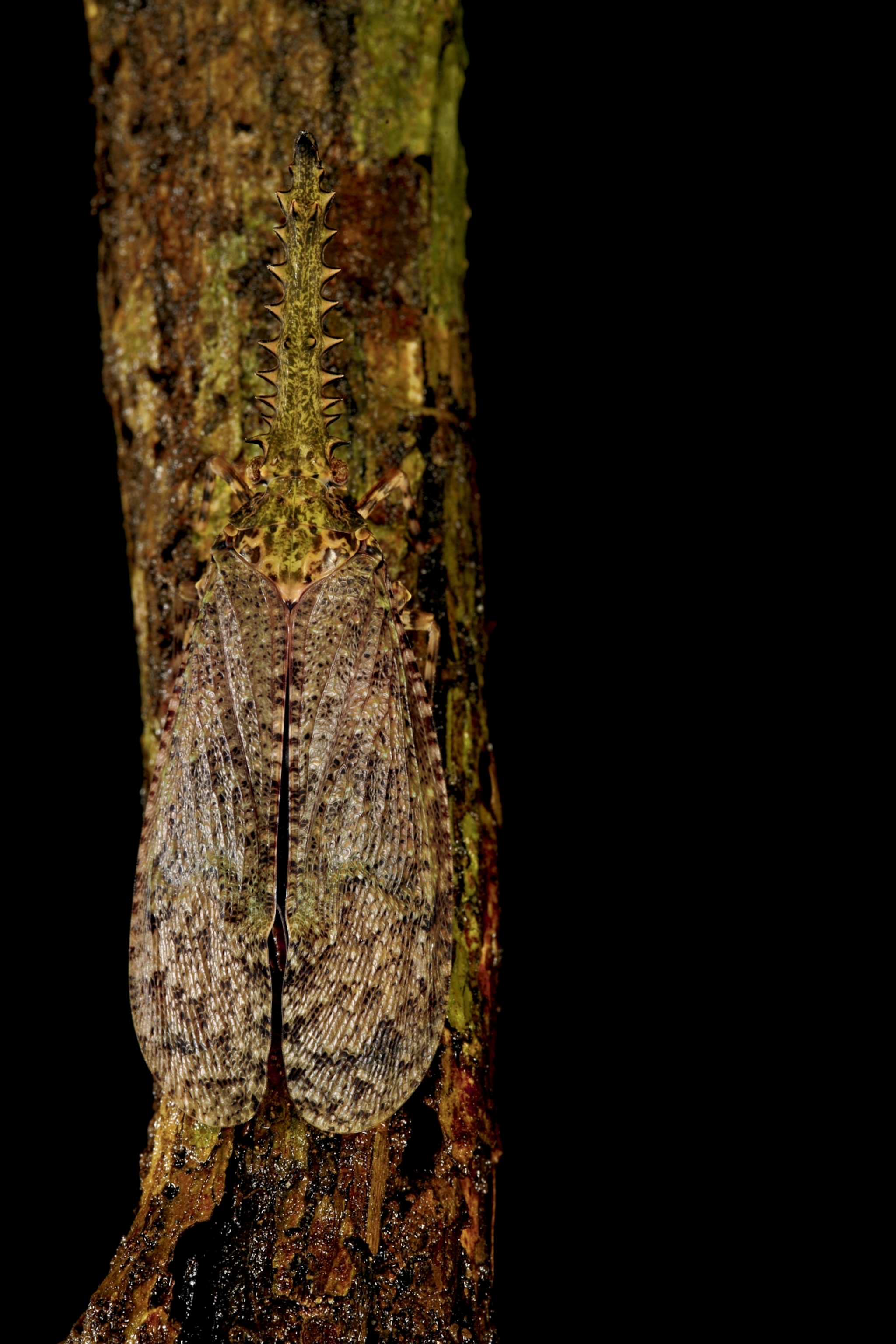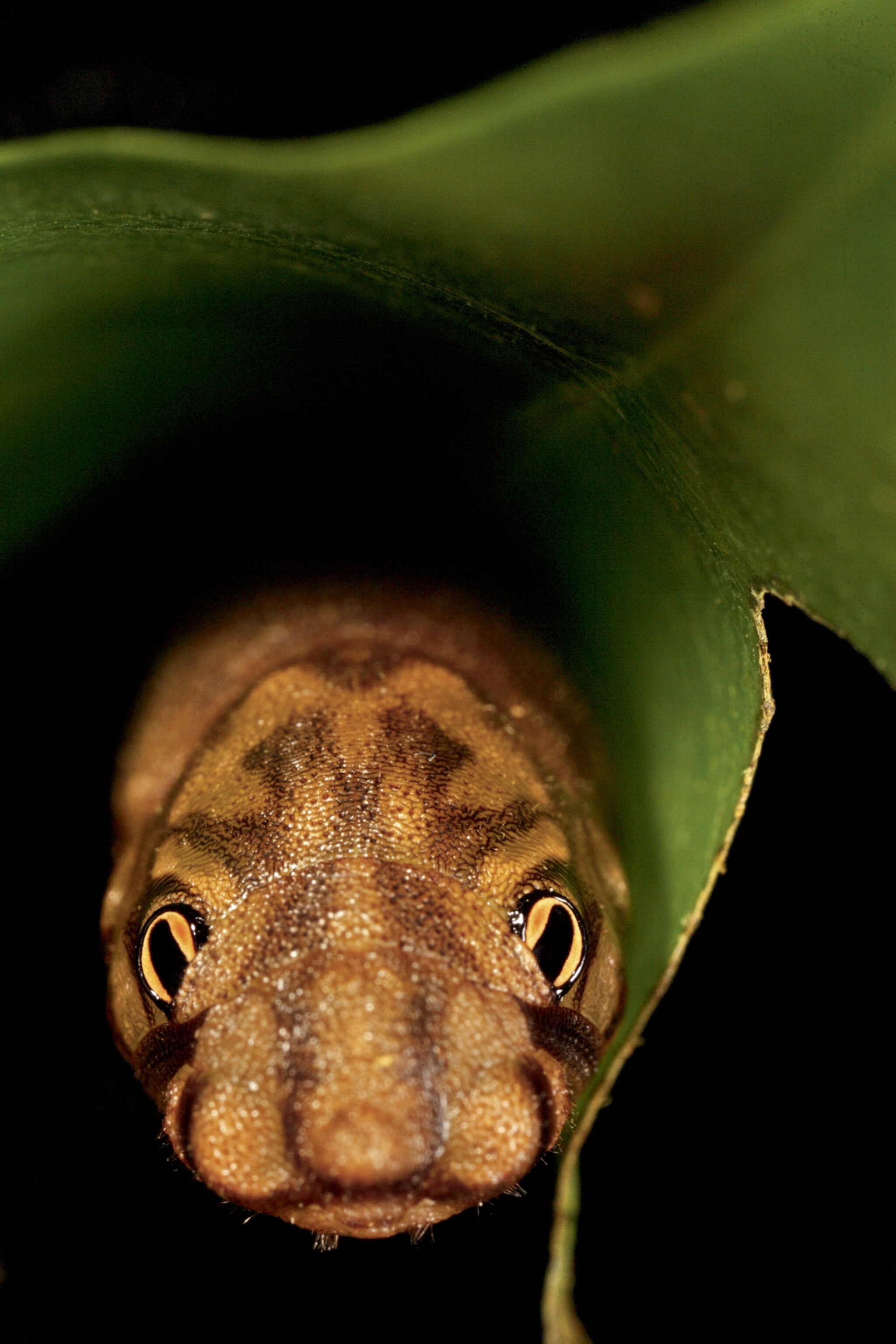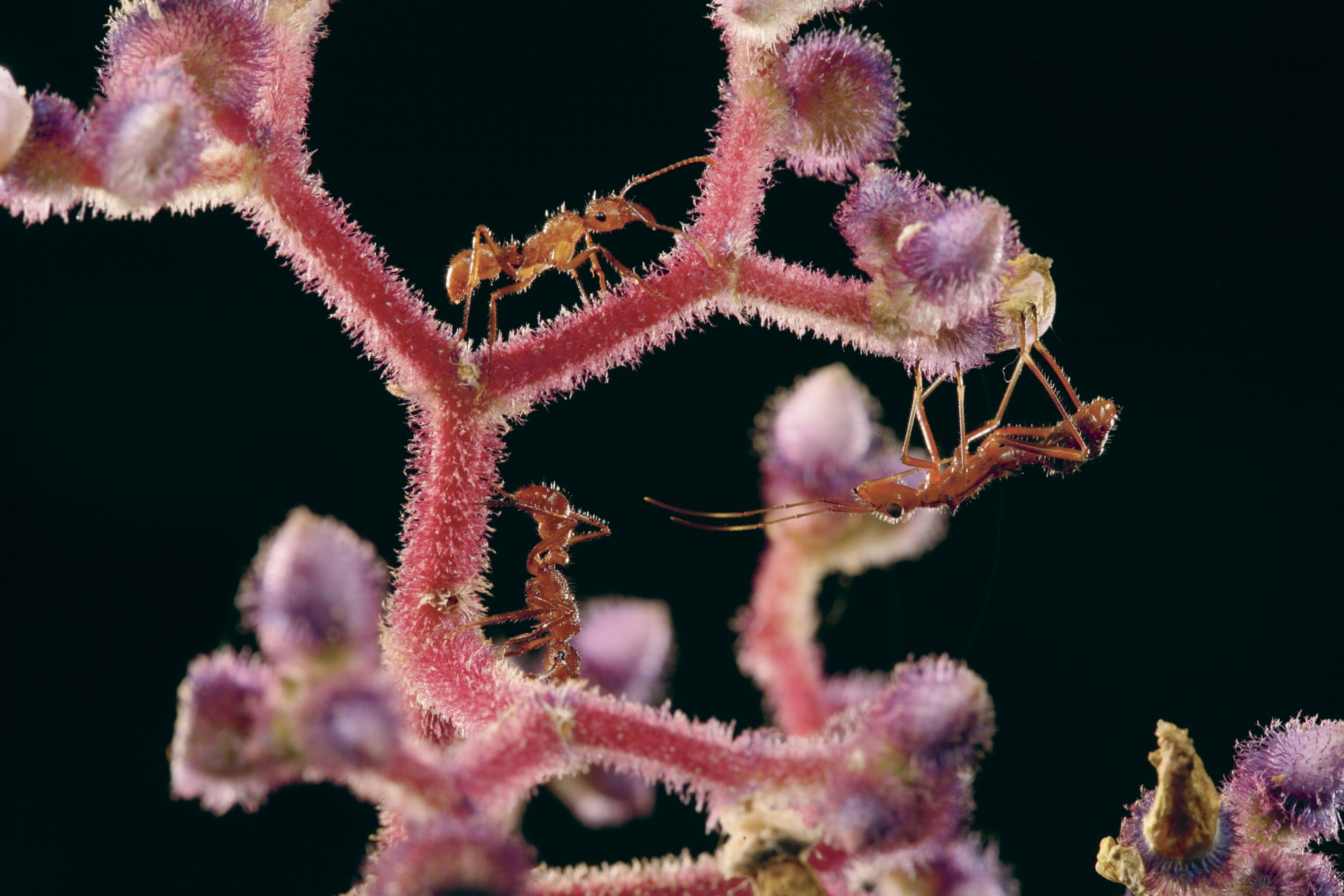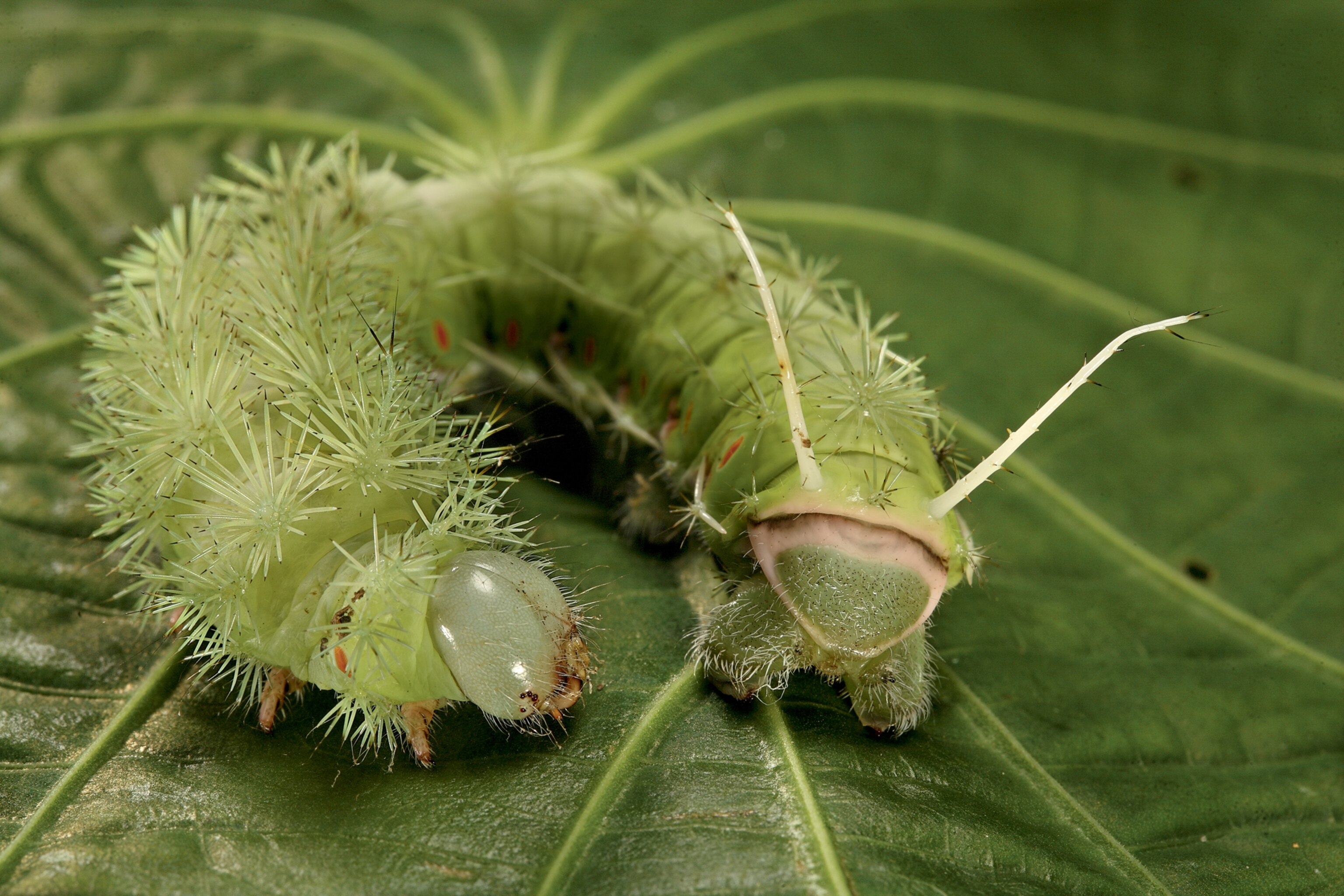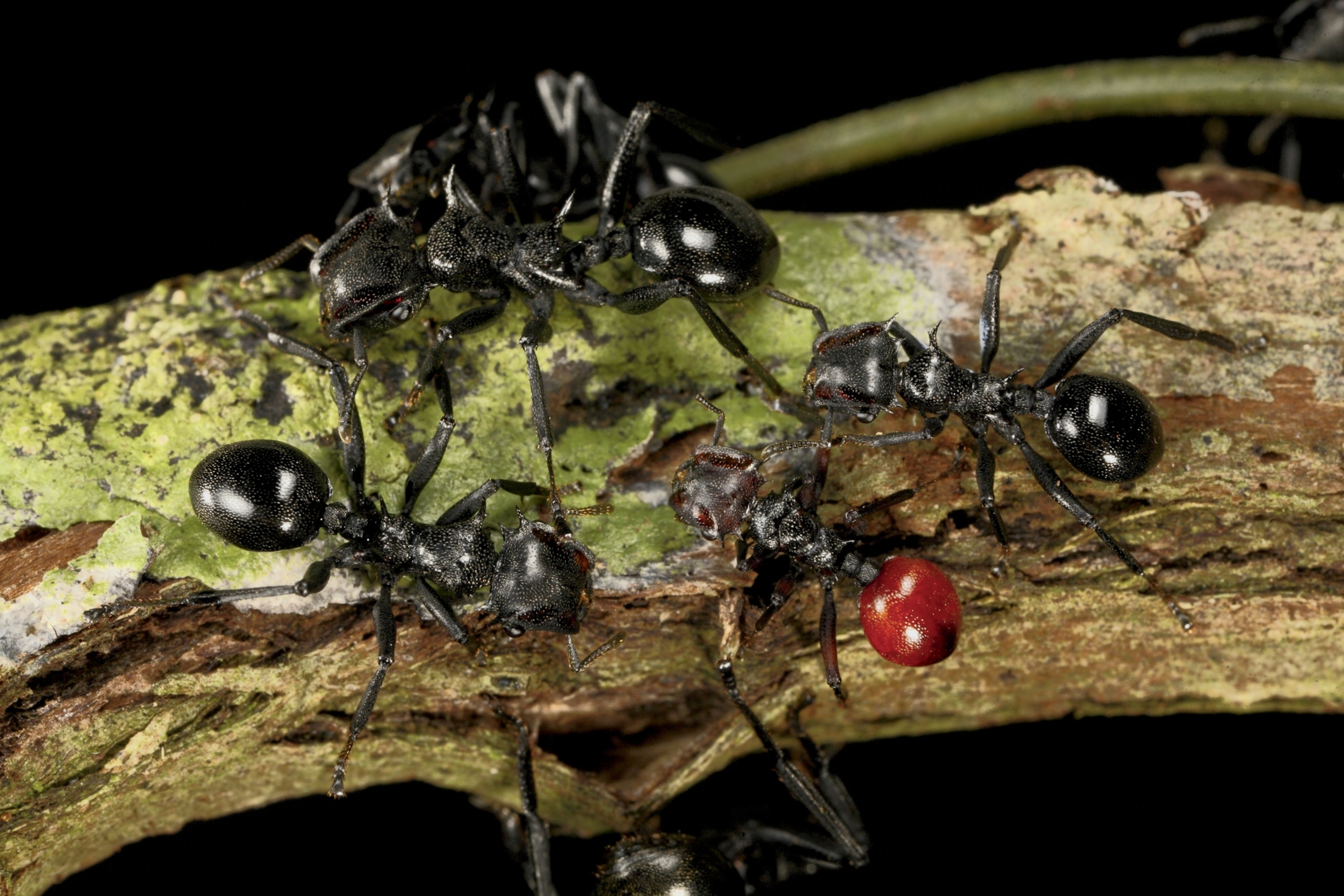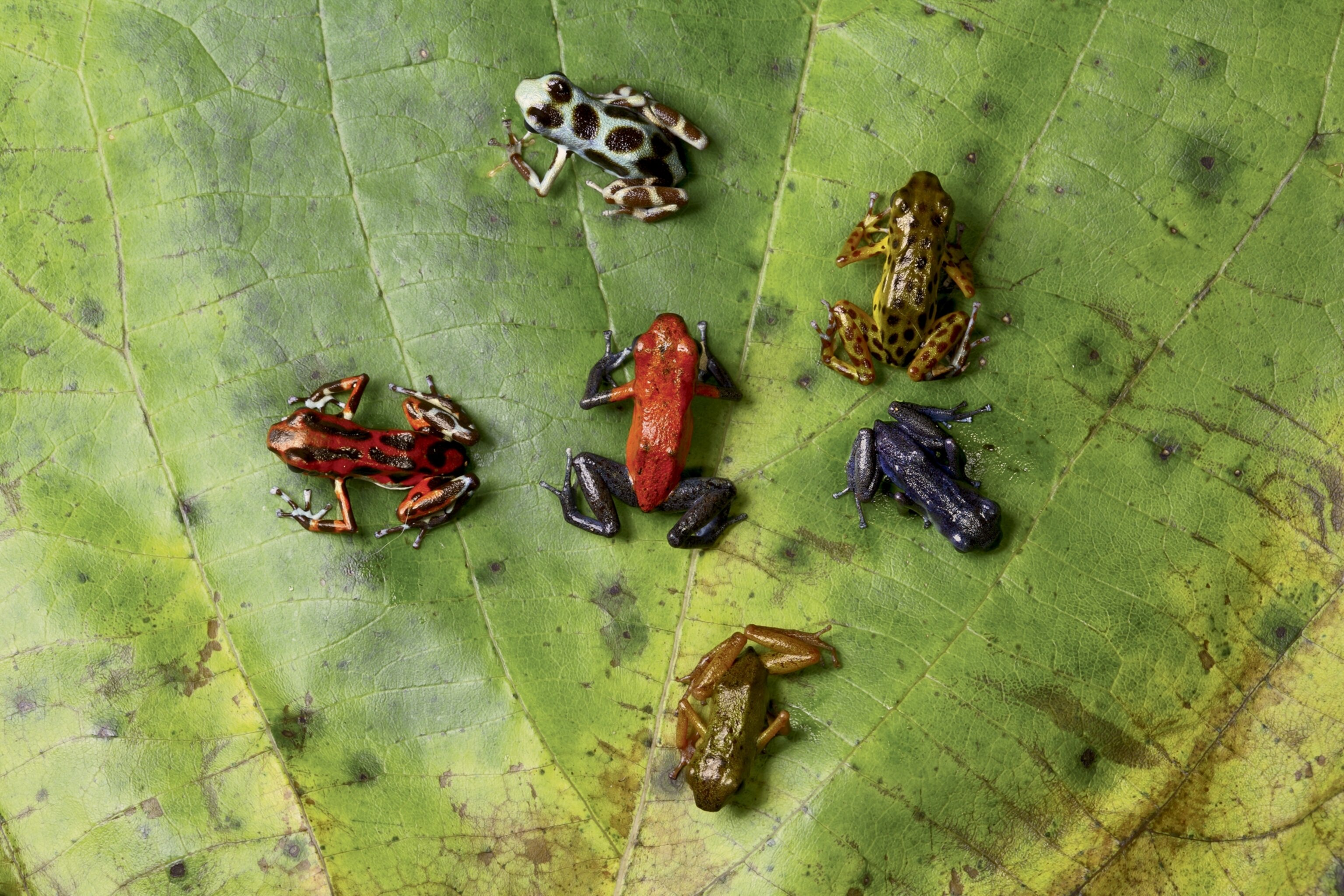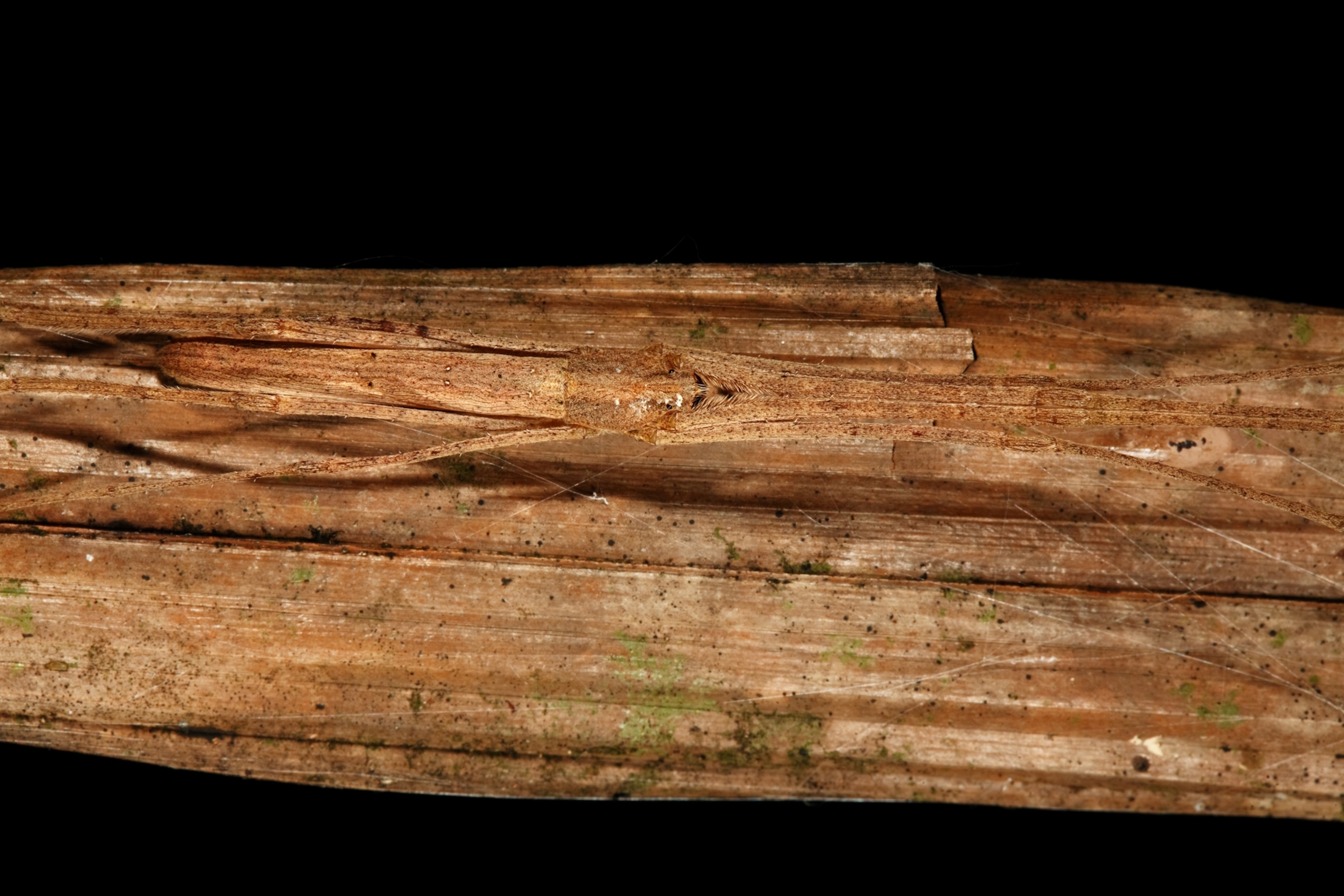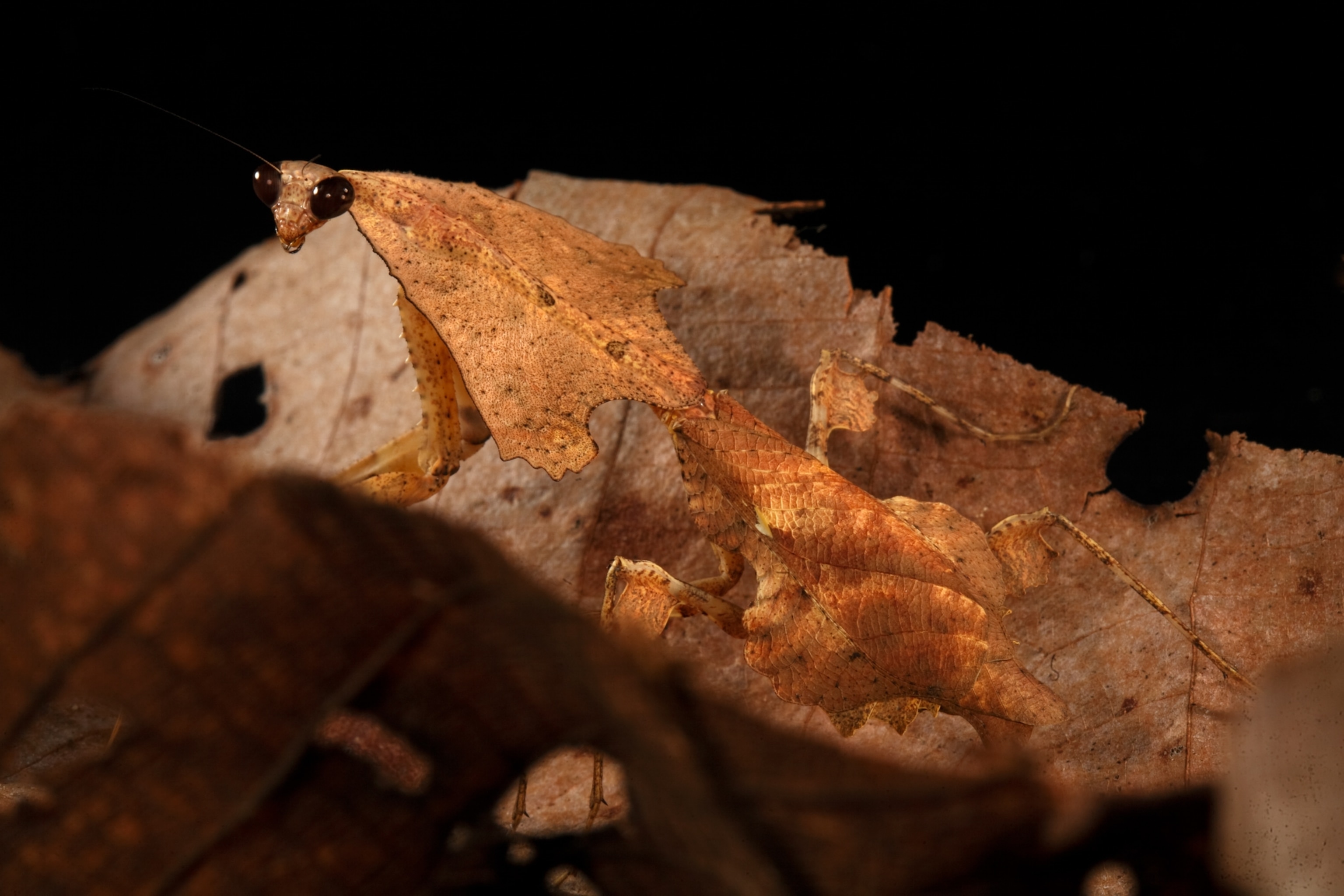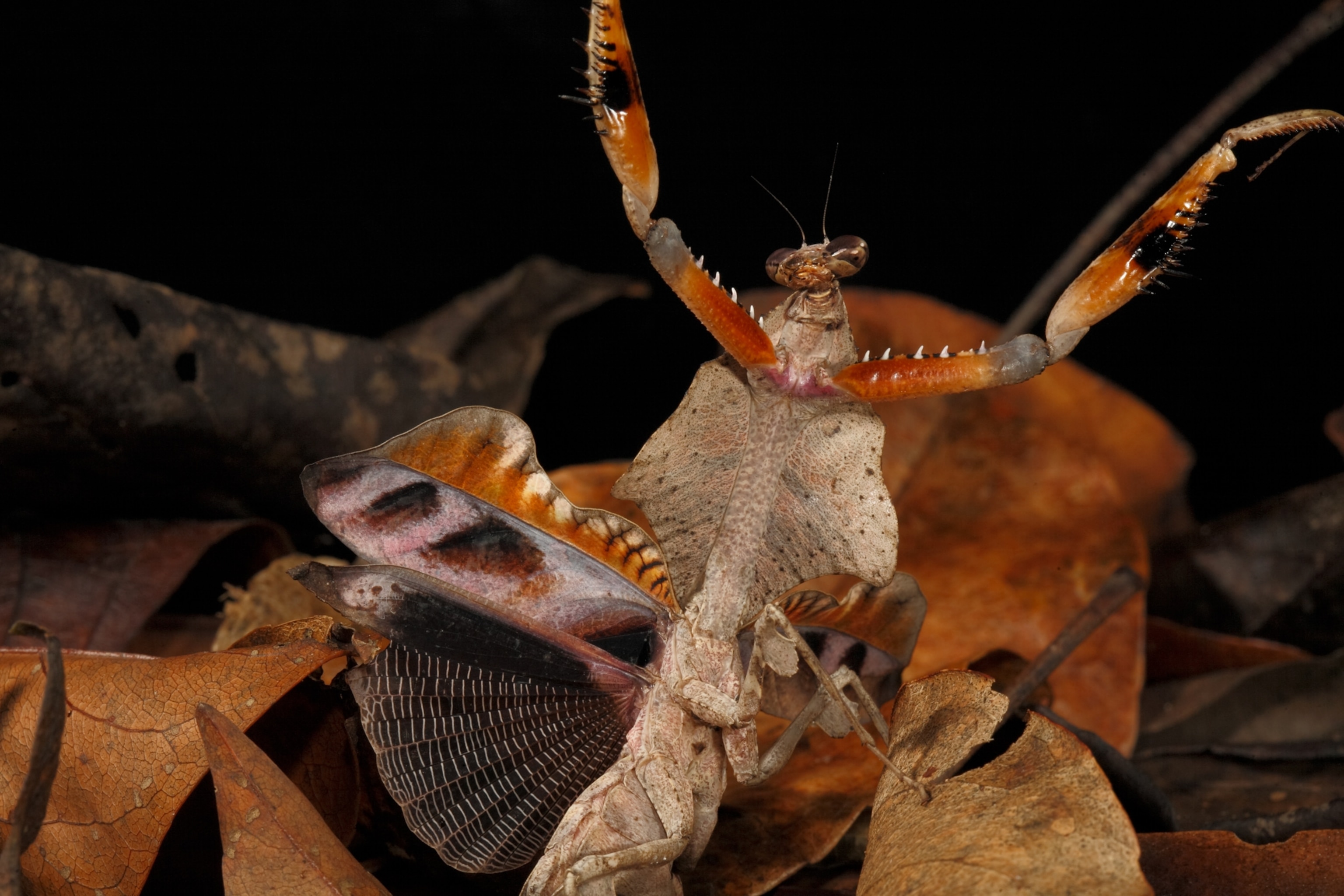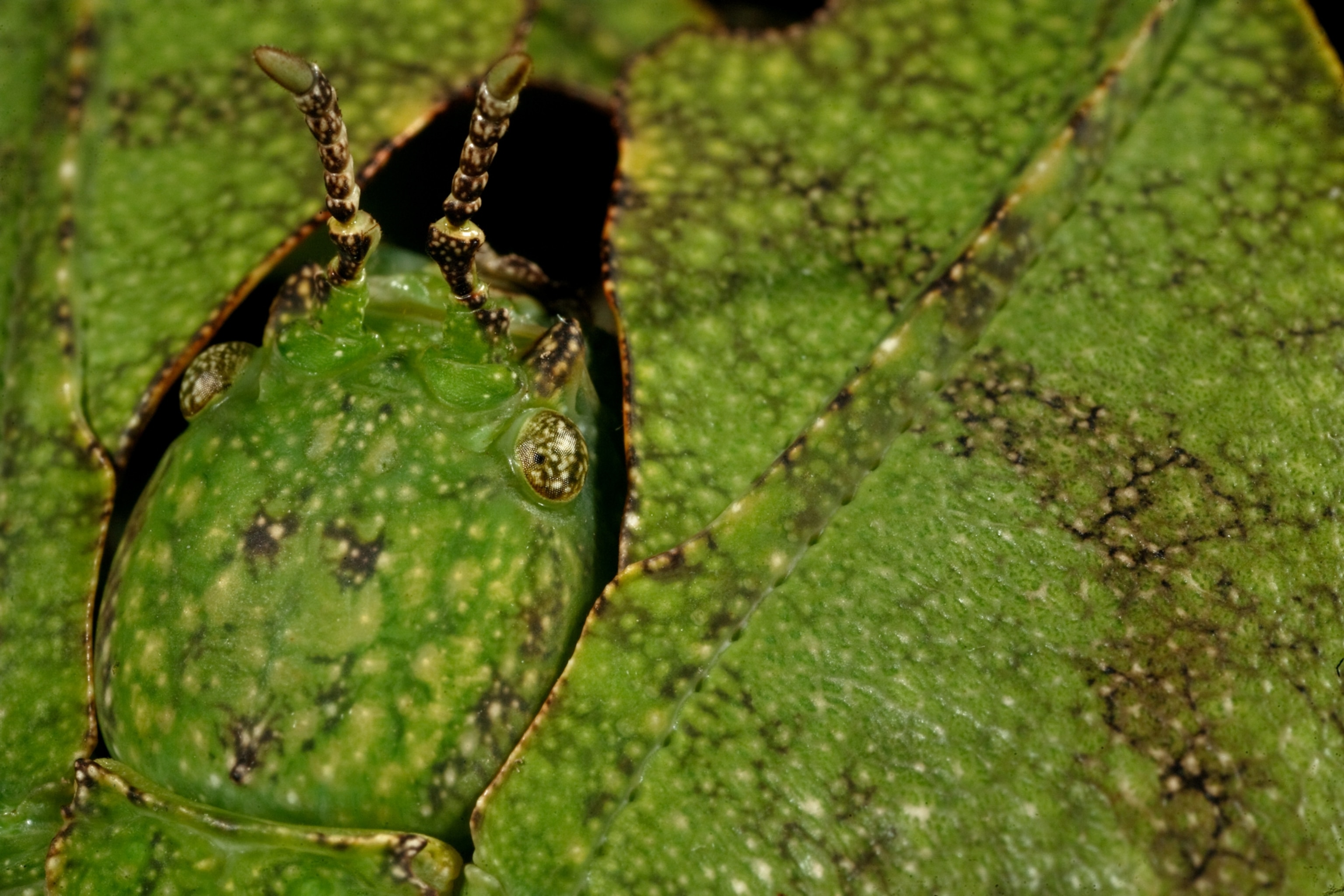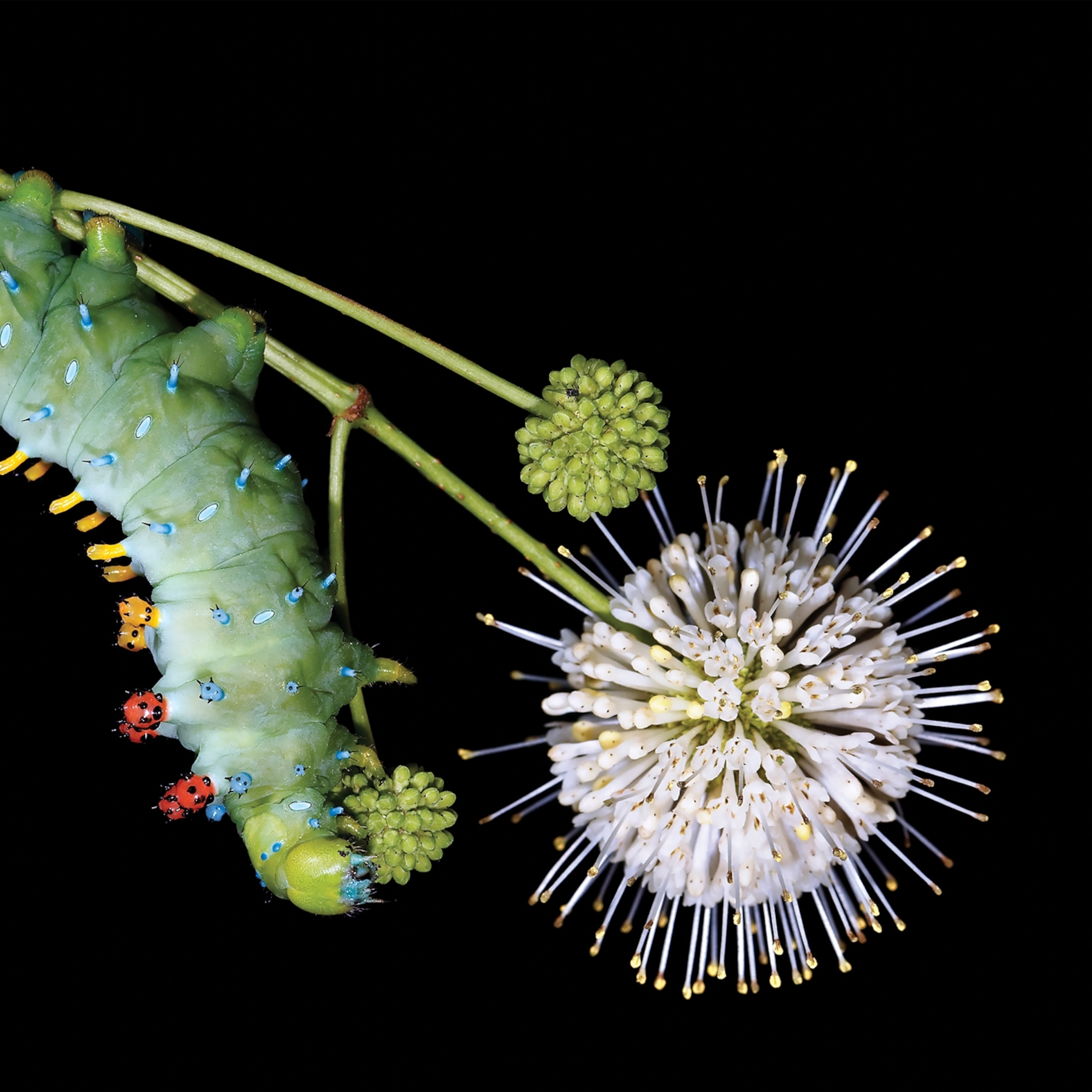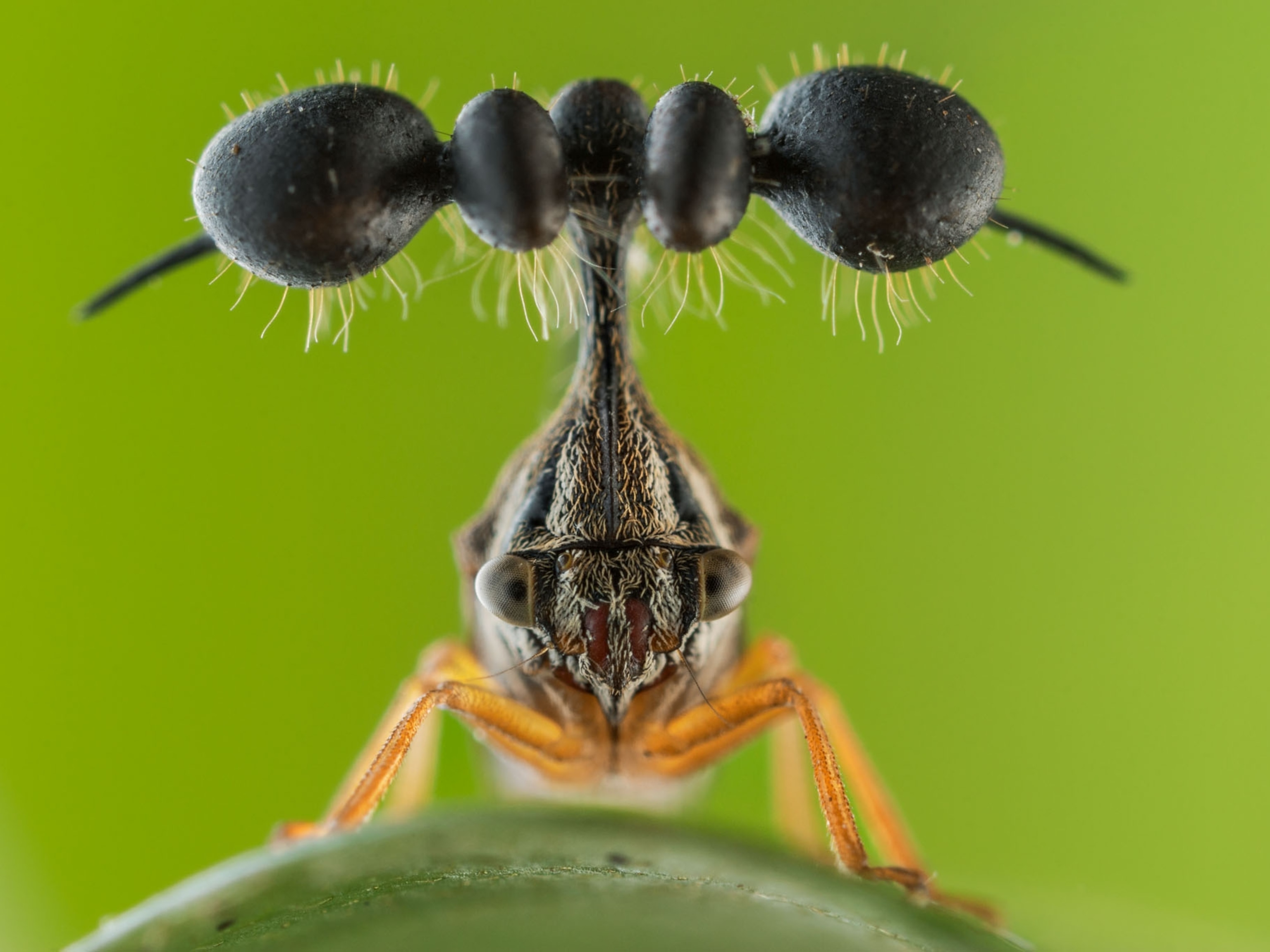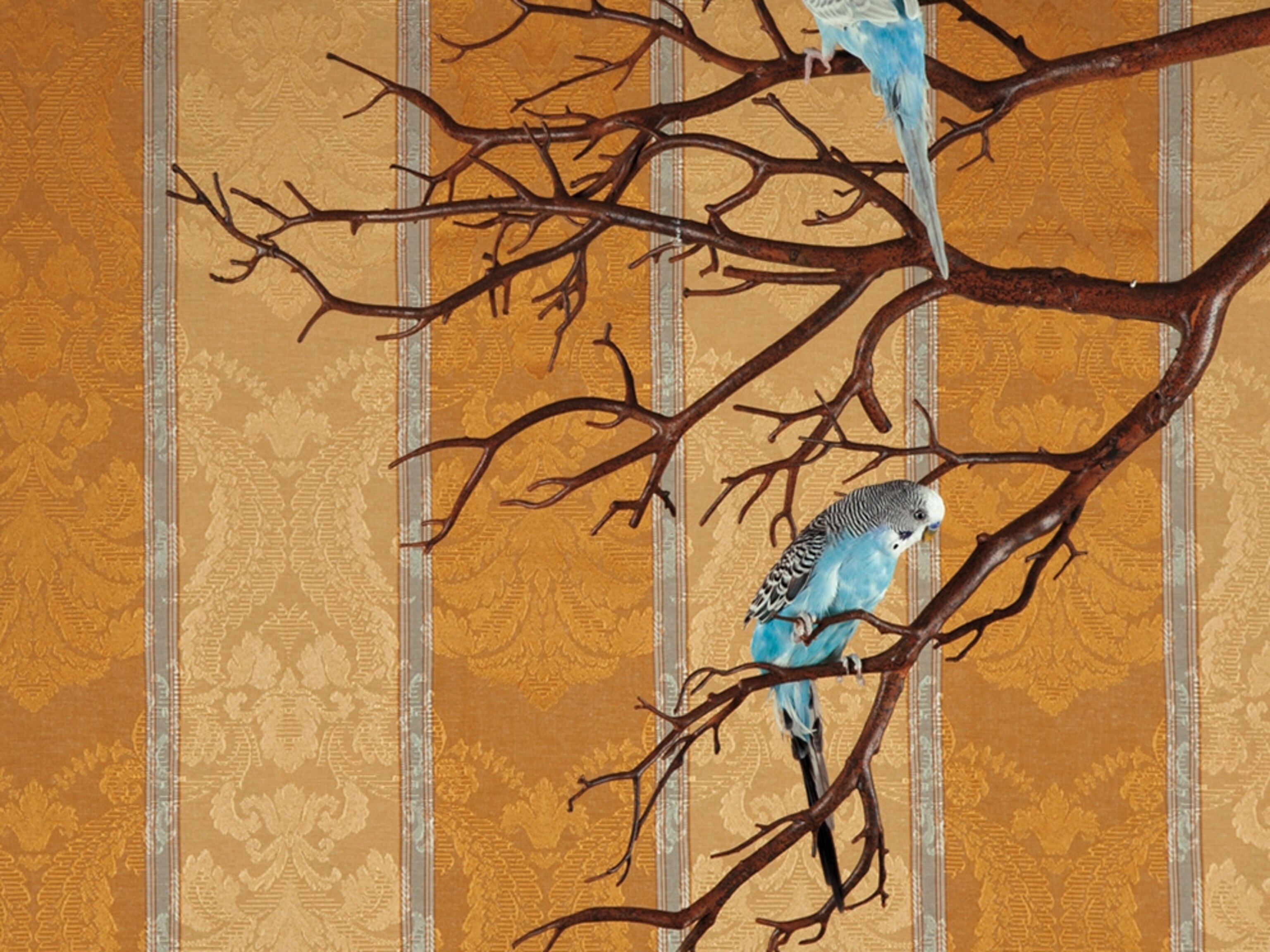The Art of Deception
Sometimes survival means lying, stealing, or vanishing in place.
When Macbeth was told he had nothing to fear until the local woods started ambling up to his castle, the tyrant sighed with relief, for "who can impress the forest, bid the tree unfix his earth-bound root?"
Macbeth obviously had never been to Barro Colorado Island in Panama.
It is 9 p.m. and as dark as a witch's mummy, but in the cone of light cast by my headlamp, parts of trees seem to be unfixing themselves and wandering at will. A four-inch twig buzzes overhead and thuds onto a nearby branch. A lime green leaf scratches through a pile of brown leaves, finds nothing of interest, and crawls toward another pile.
(Beetle larva lures and kills frogs, while the adult hunts and paralyses them)
I approach the migrants for a closer look, knowing full well what they are but still dazzled by the details, by the almost comical earnestness of the charade they embody. The "twig" is a stick insect, a magnificent specimen of the Phasmatodea clan, its outer sheath a persuasive rendering of striated bark, its tubular body and head punctuated by fake axillary buds and leaf scars—the little knobs and notches that make a twig look twiggy.
(Beetle larva lures and kills frogs, while the adult hunts and paralyses them)
During the day these insects move little and are nearly impossible to distinguish from the sylvan backdrop they imitate, and that, of course, is the point: to remain invisible to sharp-eyed predators that use vision to hunt. Come nightfall, however, sticks and leaf katydids shake off their vegetal torpor to do some feeding of their own—on leaves and forest-floor detritus—at which point their ancient artifice can be admired by grace of our modern artificial lights.
We are drawn to mimicry and disturbed by it too. As children, we play dress up and let's pretend, and we understand our fellow hominins through private reenactment. Our most elaborate masquerades—for Halloween, say, or the Day of the Dead—are often tangled up with our deepest fears. What self-respecting Hollywood slasher would be seen without his Munchian mask or mother's wig?
Mimicry in nature likewise can charm or repel us, but whatever our human judgments, this much is true: Scamming works, and the natural world abounds with P. T. Barnums, which fill every phyletic niche, sucker every sense. Biologists have barely begun to tally life's feinting legions or trace the evolutionary and genetic details of each imposter's disguise. Sometimes the deception serves as camouflage, allowing its bearer to elude detection by predators, prey, or quite often both: In Panama I found a mantid that looked like a few sprigs of radicchio, the perfect cloaking device for a stealth hunter of leaf-eating insects that is itself much coveted by insectivorous reptiles and birds. At other times the swindler wants its merchandise to be noticed; that's the whole point. An anglerfish wags its head until its fleshy protuberance shimmies like a worm and baits other fish. Carrion orchids sprout large, purplish, fetid blossoms that look and smell like dead meat to attract scavenger flies, which will alight on the flowers, get dusted with pollen, and maybe, just maybe, help the orchid breed.
The sensory form that an act of mimicry takes varies according to the sensory talents of the mimic's target audience. Most familiar to us visual primates are the visual mimics, the ones adapted to fool the eye, like the riparian frogs that crouch in a riverbed and look as slick and round and inorganic as the polished stones around them, or the caterpillar that, when frightened, will hold up its front end to flash a fluorescent salmon pink face with a pair of scary snake eyes. But there are vocal mimics too, like a palatable species of tiger moth that deters bats by parodying the ultrasonic clicks of a toxic moth the bats detest, or like the greater racket-tailed drongo of Sri Lanka, which mimics the calls of other birds to drum up a mixed-species flock in which the drongos can more safely and efficiently forage.
Then there are olfactory mimics, such as that mad parfumier the bolas spider, which can lure male moths by secreting perfect knockoffs of the counterpart females' eaux de toilette. There are even tactile mimics, including a parasitic fungus that lives in the inner chambers of termite mounds, where it is kept warm, moist, and competitor free. Termites are notoriously zealous housekeepers. How does the fungus elicit indulgence rather than expulsion? By assuming the shape and texture of ripe termite eggs.
Mimicry fables can sound like O. Henry stories, offbeat dilemmas dapperly resolved. For example, caterpillars are voracious eaters. They chomp their way through many leaves in their lifetimes. Birds love fattened caterpillars, and as they fly overhead, they search for signs of caterpillar activity, most notably damaged leaves. To thwart the aerial reconnaissance, one species of caterpillar has adopted a novel dining style. Rather than tearing through foliage at random, the Geometridae caterpillar cuts its leaves deftly, mincingly, moving along the edges like a seamstress with her scissors, in and out, zig and zag. By the time the caterpillar is done, the leaves may be much smaller, but their borders maintain their maiden serrated form.
Sometimes the best offense is a ghoulish pretense. Reporting recently in the Proceedings of the National Academy of Sciences, Leslie Saul-Gershenz and Jocelyn Millar described the case of the abominable blister beetle and the benighted solitary bee. Blister beetles live in the southwestern deserts of the United States. Females lay their eggs in grassy patches where solitary bees forage. The beetle eggs all hatch simultaneously, and the thousand or so newborn larvae immediately gather together into a tight formation. They form a nice oval shape, all dark and fuzzy. They travel as an inseparable unit, up and down the blades of grass. They look and act just like—a female solitary bee. Before long, they start releasing a pheromone mimic, and now they smell like a female bee too. A male bee lands on what he thinks is a mate, and the blister pack clings to him en masse. Disappointed by the encounter, and seemingly unaware of his cargo, the male bee flies on in search of new love. Should he find and approach a real female bee, the beetle larvae will instantly abandon him and cling to her. The female will take them where they want to go, back to her well-provisioned nest. The larvae will deplane, settle down, and gorge themselves to maturity on nectar, pollen, and, best of all, the bee's eggs.
Of course, even the most cunning of nature's caricatures have no narrative mastermind behind them. Mimicry exemplifies evolution by natural selection, the relentless struggle in which parents spawn a diversity of offspring that chance and nature's cruel eye for weakness shear almost clean away. If your slight resemblance to bird dung gives you enough of an edge that you survive to breed, your progeny may inherit your lucky guano cast. Maybe one will even top you as a droppings imposter, and within a few hundred generations the trait will have spread through the whole population and be the gold standard for your kind.
Mimicry also reveals just how messy evolution can be, how ad hoc and make-do. For example, Ximena Nelson and Robert Jackson report in the Proceedings of the Royal Societyon the dilemma of the male Myrmarachne, a jumping spider. Like a number of the world's jumping spiders, these arachnids have evolved to look like ants, a strategy that plays into the antipathy many predators have for the aggressive, noxiously armed, and ecologically dominant social insects. But the male spiders have a problem with the basic strategy, for mating rituals demand that they sport elongated mouthparts, which could detract from the overall antlike effect. Evolution has hammered out a compromise: Whereas the female spiders look like ordinary ants, the males with their enlarged fangs have come to resemble ants carrying bundles in their mandibles, as worker ants sometimes do. Ingenious, yes, but not perfect. It turns out that although the male jumping spiders are as effective as their female counterparts at deterring the generally ant-phobic among hunters, the males alone fall prey to predators that target ants least likely to fight back—those encumbered with bundles.
Scientists are particularly intrigued by imperfect mimicry, where one organism only vaguely resembles another. In some cases, the crude form may indicate a lineage newly embarked on the mimicry path, when evolution has only begun to hone the simulation. In other instances, the disjunction is a result of the mimicked species pulling away from its unwanted copycats. If the warning colorations that you have evolved to advertise your hard-won unpalatability are mimicked by too many edible free riders, your brand name will be cheapened and lose its protective value.
Mimicry can also be a great way to preen, or learn, or make a new friend. Among songbirds and humpback whales, competing males seem to imitate each other's songs. And some dolphins duplicate each other's flying leaps. Parrots are masters at parroting, and ape is what the great apes do, which is why orangutans can learn to cook pancakes and chimpanzees to hunt with tools, and we compare each other to a summer's day and mirror each other's joy with a smile.

